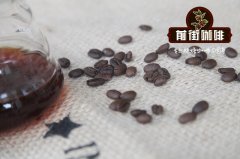What do you think of the coffee grinder scale? How to grind the coffee? How to brew espresso with a coffee maker

Professional coffee knowledge exchange more coffee bean information please follow the coffee workshop (Wechat official account cafe_style)
What do you think of the coffee grinder scale? How to investigate the grinding degree of coffee beans? How to brew espresso with a coffee maker? What kind of coffee is grinded?
◎ degree of grinding (grinding coefficient)
The thickness of coffee powder is called 'grinding degree' or 'grinding coefficient'.
Usually, many people think that coffee powder is coffee powder.
But I didn't notice that even the coffee powder
If you use different brewing coffee utensils
Coffee powder also needs to be matched with different thicknesses.
If the coffee powder does not make a proper match of thickness and thickness
Will lead to uneven extraction.
The loss rate of fine powder is faster than that of coarse powder because of the loss of water.
On the other hand, the time of extraction will be different.
Finer powders will be over-extracted because they are soaked in water for too long.
The coarser powder will result in insufficient extraction due to insufficient soaking time in water.
So the degree of grinding (grinding coefficient) has a more subtle effect on the quality of coffee.
Can not be ignored!
The range of grinding degree (grinding coefficient) can be roughly divided into several types:
● espresso grinding Espresso Grind
More suitable for using espresso machine
The fineness of the degree of grinding (grinding coefficient) is quite sensitive.
● Turkish grinding Turkish Grind
More suitable for Ibrik pot
This kind of appliance is quite rare in Taiwan.
However, this kind of coffee utensils are often found in some European countries.
● rough grinding Coarse Grind
More suitable for filter kettle
Grinding Medium Grind in ●
More suitable for trickling filter pot or air stopper (siphon pot)
● fine grinding Fine Grind
More suitable for curling kettle or mocha kettle
Maybe ordinary people still don't know how to make a distinction between thickness and thickness.
If you have a grinder at home (more suitable for a grinder with 10 scales)
The number on the dial can be used as a reference for the degree of grinding (grinding coefficient):
(1) scale 1 Murray 1. 5 → is suitable for using espresso machine Espresso
(2) scale 2, Murray 2. 5 → is suitable for using ice drip teapot & mocha kettle
(3) scale 3MMI 3. 5 → is suitable for trickling filter pot (cooler pot) & plug air pot (siphon pot) & American coffee pot & Belgian Vienna pot
(4) scale 3. 5Murray 4 → is suitable for French filter kettle.
Through the above scale, it should be at the time of grinding.
The degree of grinding (grinding coefficient) can be used more accurately to match the coffee utensils used.
So when you hear that the more detailed you are, the stronger you are.
Then it can be said that this statement is wrong.
That's what I often hear.
However, after getting to the bottom of these error messages,
Salespeople who mostly come from commercial coffee.
Or a so-called counselor in a commercial coffee shop chain
Or the wrong message about coffee with a little knowledge.
The degree of grinding (grinding coefficient) is absolutely necessary to match the coffee utensils used to brew!
Preparation for espresso adjustment grinding?
First of all, there is a difference between a single bean grinder and an Italian bean grinder. Make sure your bean grinder is suitable for making Italian coffee before we start. The adjustment range of the scale of the single mill is large, and the grinding particles are generally thicker, which can not be fine-tuned and can not meet the needs of making espresso.
In addition, when you get a newly purchased coffee bean and plan to grind it, you can first get the recommended extraction data from the seller. Before starting the grinding and calibration, please make sure that the inside of your bean grinder is clean. Remove the cutter head, clean it with a brush or blow it with air. Try to clean up the coffee powder left in the bean grinder.
Grinding process
Because of the need of work, we often help coffee bean buyers introduce how to correct the extraction. Here is a common grinding method used in our coffee roasting factory:
The first step is to adjust the dial of the bean grinder to infinitely small (considering the cutter head wear in different stores, we are used to grinding it in an extreme way). Then clear the weight of the coffee machine handle on the electronic scale and weigh it on the electronic scale after receiving the powder. The goal is to weigh 18 grams of powder and cloth powder, and use our usual pressure powder (or use a constant powder press).
Preheat and boil the head, then extract it with Italian concentration.
Of course, before the first drop of coffee is set aside within 8 seconds of the start of the extraction, then decisively stop the extraction and proceed to the next step-thickening the scale by 1 grid (general brand bean grinders on the market will have a digital scale. For example, we used the grinding scale is 1 scale, and then try 2 scale). Then we weigh 18g powder and try to extract the concentrated solution. If the obvious over-extraction phenomenon still exists, we decisively stop the extraction, and then adjust the scale to 1 grid, and then try to extract.
Repeat the steps of adjusting the scale and extraction until the dial is adjusted to the point where the concentrate can flow out normally. Of course, if you are a glutton, you can quickly get the desired goal scale through the comprehensive judgment of baking degree and graininess.
In the third step, we began to test the extraction rate and taste the taste of the concentrate. When the concentrate flows out normally, we prepare a coffee cup and use it to weigh the coffee liquid after clearing the weight on the electronic scale. Because we use 18g powder, according to the extraction standard of espresso, generally speaking, the ratio of powder to water is controlled within the range of 1mm, 2m, 1v, 2.5 (the ratio of powder to water, that is, the ratio of powder to extract weight, if we weigh 18g powder, the target extraction gram weight is between 36g-45g).
In the fourth step, after the flow rate of coffee liquid begins to return to normal, it begins to correct the taste. During the extraction time of 20s-25s, whether we can keep the extraction state within the range of using 18g powder to extract 36g-45g concentrate.
If the concentrated taste has a strong sense of coke, bitterness, paste, astringency and miscellaneous feeling, it is excessive extraction, and then the grinding plate scale needs to be fine-tuned, thickened 0.5 grid, and then tested.
If you see that the flow rate of the coffee liquid during the extraction is a little high, you may still be able to get a cup of espresso with a gram weight within the standard extraction range between 36g-45g in about 25s, but the taste is sour and the body is weak, then consider that this cup of coffee should be insufficient in extraction, so adjust the dial to 0.25g. The extraction test of the concentrate was carried out again, and the time was timed with a stopwatch.
Yes, this idea sounds tedious, but in fact, it is to fine-tune the grinding degree by controlling the amount of powder and the target extraction weight, first locking the large interval, and then fine-tuning the small interval to find the most suitable grinding degree.
After repeating the above steps once or twice, you can approach the target scale.
Step 6, up to now, if the flow rate of concentrated liquid extraction is stable and the color of oil is normal, it will probably reach the standard value. However, if the flow rate is still a little fast / slow, the conditional bean grinder can fine-tune the 0.1 scale, if, unfortunately, you find that the grinding degree you need is exactly between the two scales, but the bean grinder has no intermediate scale to choose from. Then you can consider adjusting the powder strength correction.
After the bean grinder is adjusted, if you feel that the flavor of the extracted espresso is still lacking, then you need to find other reasons. For example, ask your bean supplier whether there is a more accurate advice on the extraction water temperature, or whether Ristretto is more in line with the characteristics of this bean.
Using this method of grinding, you can complete the task in less than 200g beans, which seems complicated, but because each adjustment has rules to follow, rather than luck, it is more labor-saving, labor-saving and cost-saving, so give it a try.
Important Notice :
前街咖啡 FrontStreet Coffee has moved to new addredd:
FrontStreet Coffee Address: 315,Donghua East Road,GuangZhou
Tel:020 38364473
- Prev

How do you make homemade coffee? Can the freshly ground coffee powder be washed directly? How to make the ground coffee powder by hand?
Professional coffee knowledge exchange more coffee bean information please follow the coffee workshop (Wechat official account cafe_style) self-grinding coffee how to do? Can the ground coffee powder be washed directly now? How to make the ground coffee powder by hand? How do you drink it? Drinking coffee is really becoming more and more popular, and it is becoming more and more popular. Although the price of coffee in the coffee shop is not so close to the people, but oneself
- Next

How would you like your coffee? How much is a cup of Sakui coffee?
Professional coffee knowledge exchange more coffee bean information please follow the coffee workshop (Wechat official account cafe_style) to [Sidamo Sakuran coffee beans] flush good, it seems easy, in fact, pay attention to a lot of details, each factor will affect the taste. With the same bean, why can others make it taste good? you can't get the same taste with the same process.
Related
- Detailed explanation of Jadeite planting Land in Panamanian Jadeite Manor introduction to the grading system of Jadeite competitive bidding, Red bid, Green bid and Rose Summer
- Story of Coffee planting in Brenka region of Costa Rica Stonehenge Manor anaerobic heavy honey treatment of flavor mouth
- What's on the barrel of Blue Mountain Coffee beans?
- Can American coffee also pull flowers? How to use hot American style to pull out a good-looking pattern?
- Can you make a cold extract with coffee beans? What is the right proportion for cold-extracted coffee formula?
- Indonesian PWN Gold Mandrine Coffee Origin Features Flavor How to Chong? Mandolin coffee is American.
- A brief introduction to the flavor characteristics of Brazilian yellow bourbon coffee beans
- What is the effect of different water quality on the flavor of cold-extracted coffee? What kind of water is best for brewing coffee?
- Why do you think of Rose Summer whenever you mention Panamanian coffee?
- Introduction to the characteristics of authentic blue mountain coffee bean producing areas? What is the CIB Coffee Authority in Jamaica?

